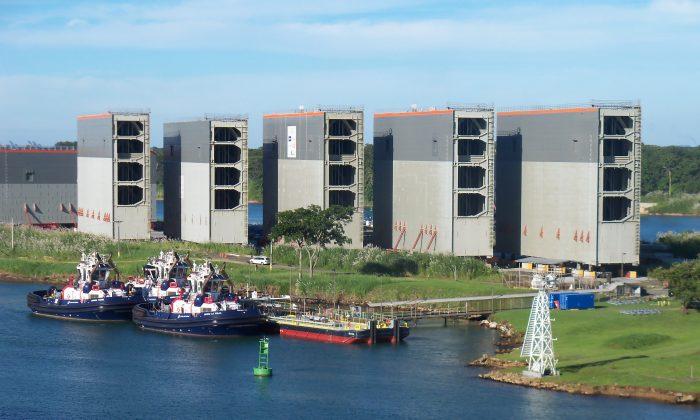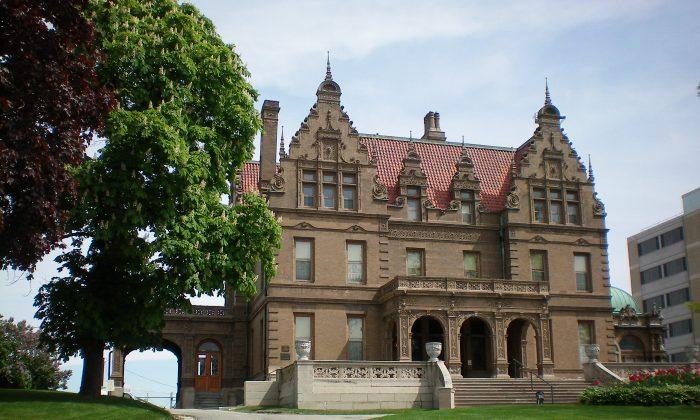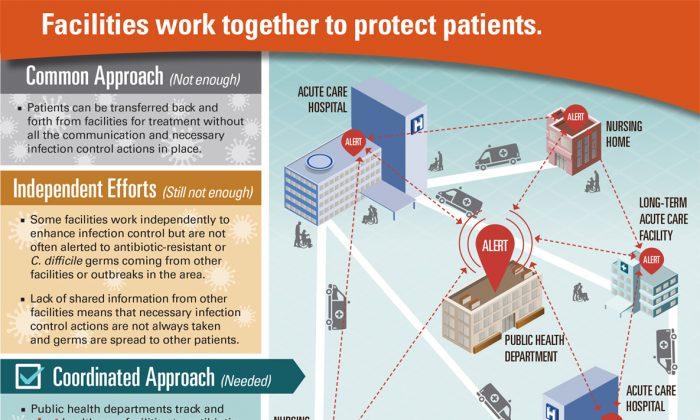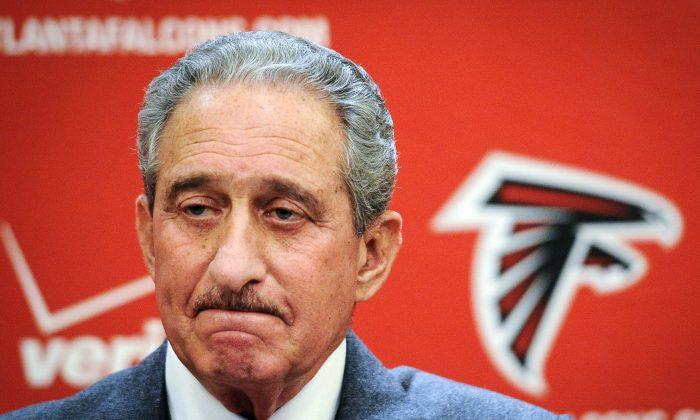Panama is expanding its canal, and a delegation came to Atlanta from Panama to win friends and influence people. Georgia is deepening its Savannah port in order to accommodate the giant ships the new canal can allow. Leo González, Panama Pacifico government agency administrator, Commercial Manager Robert Pereira, and Frank Terracina welcomed me to a burgundy and gold meeting room at the downtown Ritz on Aug. 28. They spoke with pride and optimism about the canal and their mixed-use development project.
I had a wistful thought. America built the Panama Canal 101 years ago. It’s one of the Seven Wonders of the Modern World, according to the American Society of Civil Engineers. Would we have the will and unity to do something that big today? Right now it seems we cannot even agree to fix our roads and bridges, much less create a wonder.

The canal expansion is a product of democracy—Panamanians voted for it in a 2006 referendum. The country, about the size of South Carolina, will spend $5.3 billion on new, mammoth, water-saving locks and wider lanes. González laughed and said it passed overwhelmingly. The yes votes were 76.8 percent. The government had campaigned for the expansion, “but it was more of an educational effort than a real campaign.” Would we vote to rebuild our highway system, if we were convinced of the benefits? Would we vote to mine asteroids? Would we support a space race as we did in the 1960s?
The canal transformed shipping in the Western Hemisphere, letting ships go from the New York to San Francisco in less than half the distance than sailing around Cape Horn. It was much harder to build than its sister Suez Canal, because it went through mountains.
The answer was locks. Ships that can fit through the locks are called Panamax, 965 feet long and 106 feet wide. In 1914 no one imagined bigger ones. But New Panamax ships will be 1,400 feet long and 180 feet wide. The expansion, delayed by leaks and labor problems, is set to finish in 2016. It doubles the canal’s tonnage capacity, and Panama has the business infrastructure to handle the volume.
Panama Pacifico is a planned community on the canal near downtown Panama City. With 3,450 acres, it’s one of the biggest mixed-use developments in the world. More than 220 companies already have offices there. González wants to attract more. “Panama is an opportunity to conquer Latin America without being in Latin America,” he said.
Because of the country’s long friendship with America, it’s a perfect intermediary for American businesses, in his opinion. Latin America is many countries and many cultures, most less stable than Panama, and some with unfriendly governments. Panama is entirely friendly and has long experience with logistics. “We are a commercial translator,” said González. He is proud that Panama Pacifico has “18 different entities ready to do all the needs of the companies.”
One manager is in charge, which he said cuts down on red tape and protects against corruption. It’s a “one-stop shop.” In a couple of cases, companies have had problems with customs and Panama Pacifico has been able to resolve the trouble, he said.

González’s background was in private business and that was essential, in his opinion. President Juan Carlos Varela appointed González soon after his election in 2014, as part of what he described as a clean break with the previous administration. “This kind of project has to be managed by a professional with experience in the private sector,” said González. “It’s very important that we speak the commercial language.”
Pereira said he is pleased that the second largest reforestation project in Panama is part of the plan. Most, 80 to 90 percent, of the 494-acre reforestation is in the footprint of former American military bases, he said. He is also proud that the businesses drawn to the canal are supporting “quality jobs.” For example, call centers there are no longer about volume, “making 1,000 calls a day.” Now they are about making 15 calls to your colleagues, to solve a problem, he said.
“We are trying to create sustainability. We are trying to create a different way of doing business,” said González.
Talking to these genial and polished gentlemen still left me wondering why we seem unable to create big things like we once did.
Albert Goldson, executive director of Indo-Brazilian Associates LLC, a NYC-based boutique global advisory firm, addressed my question in an email. He also made my patriotic self feel a little better.
The Panama Canal is strategic for us. “From a security perspective, the canal expansion permits greater flexibility of U.S. warships traversing between the Atlantic and Pacific oceans,” wrote Goldson.

It’s not just money that stops America from fixing its infrastructure, according to Goldson. It’s multiple jurisdictions. For example, a city might hesitate to spend money on a federal highway that runs through it. But the canal is one thing, in one place, that the Panama Canal Authority is responsible for.
“Because it’s an economic and military strategic maritime highway, which collect fees for every vessel that traverses it, maintenance is of the utmost priority by all parties—the Panamanian government and its users, particularly the U.S.,” wrote Goldson.
I know the canal is to our benefit, too. I'd just enjoy knowing that we can still dream big. And I’m ready for a Panama Canal cruise, and almost ready to retire there.





Friends Read Free